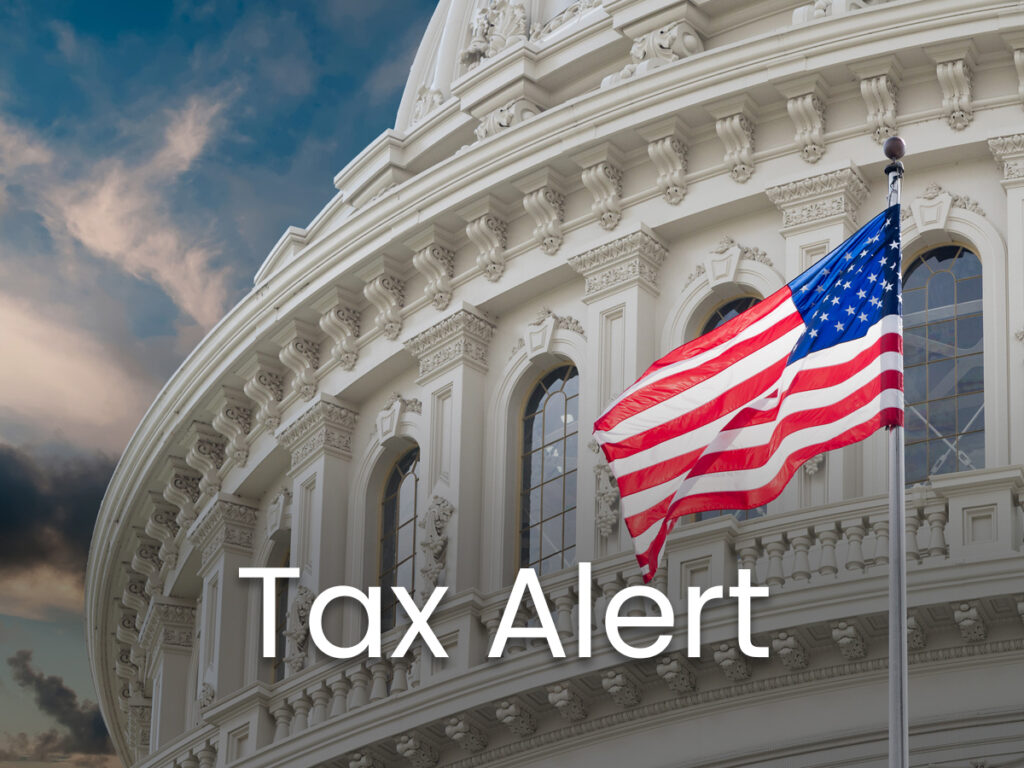COVID-19 Spurs New Tax Opportunities
Even before the COVID-19 pandemic began, food manufacturing facilities were already among the most advanced from the perspectives of health and safety. But even these sophisticated processes designed for avoiding food-borne disease have come under scrutiny in the wake of the particularly virulent and communicable COVID-19.
To safely keep food manufacturing lines open and meet an increasing demand for frozen and shelf-stable food products, food manufacturers have been forced to improvise. This encouraged innovation along a number of vectors, because – as food manufacturers well know – COVID-19 concerns are not just that pathogens might adhere to food, but also potential outbreaks among the employees who work closely together in processing facilities.
With all this investment in new processes, technologies and products required of them, food manufacturing business leaders want to know what there is in the way of relief to somehow offset these additional costs. And while the government has not offered any direct relief to food manufacturers through tax credits, there may be R&D tax credits food industries leaders may be able to claim for qualified research and development activities. Here are the basics of the R&D credit for food manufacturers to determine if their activities might be eligible for this important tax benefit.
The R&D Credit
The Credit for Increasing Research Activities, better known as the R&D Credit, has been around since the 1980s, when lawmakers instituted it as a response to the perception that US economic performance was falling behind then-rising players in Asia and Europe. The credit was designed to encourage investment in new technologies and in turn, ensure United States businesses remained competitive on the global stage. While the credit was initially intended as a short-term stimulus, it proved so popular that it was extended year after year until 2015, when Congress made the credit permanent.
The amount a business receives in the form of R&D tax credits increases in proportion to the amount of eligible expenses it incurs. Unlike other tax benefits, the R&D credit has no limit. Not only could a business significantly reduce tax liabilities in the current year, but it can also carry forward unused credits and apply it to future tax liabilities for up to 20 years, or even carry it back one year.
Qualifying Activities
In general, activities that qualify for the R&D credit are those conducted in pursuit of developing new or improved products or processes. In normal times, the majority of R&D credits received by food manufacturers are for developing new food products. However, food manufacturing businesses that have invested time and money into developing new equipment or processes for processing, packing and storing food products to create healthy and safe workplaces during COVID-19 may be eligible for an R&D credit for the activities associated with that development, as well.
The first step for determining if a given set of activities are eligible for the R&D credit is by applying the IRS’s four-part test. The activities must meet all four criteria in order to be eligible. The four tests are:
- The Technological in Nature Test. Fundamentally, the nature of the activities must rely on the principals of engineering, computer science, biology, chemistry, physics, etc.
- The Business Component Test. The purpose of the effort must be intended to develop or improve a new or existing business component. A business component can be “any product, process, computer software, technique, formula, or invention, which is to be held for sale, lease, license, or used in a trade or business of the taxpayer.”
- The Technical Uncertainty Test. Activities meant to develop or improve a business component must showcase an attempt to overcome or “eliminate” technical uncertainties or obstacles. For example, attempting to overcome uncertainties related to capabilities, methodologies, or discovering the most appropriate design would satisfy this test.
- The Process of Experimentation Test. In an attempt to overcome technical uncertainties, there must evidence of a “process of experimentation” to evaluate alternative solutions. This can be done through performing modeling and testing efforts, systematic testing, trial and error based testing, or refining and discarding hypotheses thorough an iterative process.
Qualified Research Expenses
To claim the credit, companies typically attempt to “qualify” three types of research expenses associated with activities that meet the four-part test, as outlined in the tax code. These qualified research expenses, or QREs, are:
- Wages. This includes all taxable wages paid to employees as compensation for qualified research services, as well as bonuses and stock options. The IRC defines qualified services as being either “engaging in qualified research,” “directly supervising qualified research,” or “directly supporting qualified research.” Companies can claim those wages that were paid to the employee expressly for the conduct of “qualified services”. (i.e., for qualified research activities as opposed to specifically non-qualified activities such as administration or “routine engineering”).
- Supplies. “Supplies” in this context refers to costs of non-depreciable tangible property paid for or incurred in the conduct of qualified research. Supplies that are purchased for general use do not qualify.
- Contract research. Third-party research services performed on behalf of a business can be claimed as QREs, but only at the rate of 65% of the amount paid to the contractor. Per Treasury Regulations, in order for third-party services to qualify as QREs, the contract must “entered into prior to the performance of qualified research, provide for research to be performed on behalf of the company, and require the taxpayer to bear the expense to bear the expense even if the research is not successful.”
Use Your Accountant.
While the R&D credit might seem straightforward enough at first glance, this summary only scratches the surface of the law, and determining whether a given food manufacturer may will be able to claim their expenses often gets into numerous subtle areas of the tax code. As always, food business leaders should consult an accountant to determine which of their business’s expenses they may legitimately claim as qualified research expenses.
For decades, BPM’s R&D Tax Credit team has guided numerous public and private companies through thorough R&D analyses. In the food manufacturing sector, our Firm is known as a major provider of accounting, consulting and other essential professional services to natural and organic food producers, as well as the wine and craft beverage industries. Armed with this deep industry knowledge, our accountants are in an ideal position to identify which activities your business may claim for the R&D credit. To learn more about how we can maximize your tax savings during these turbulent economic times, contact Andre Shevchuck, Specialized Tax Services practice leader.



